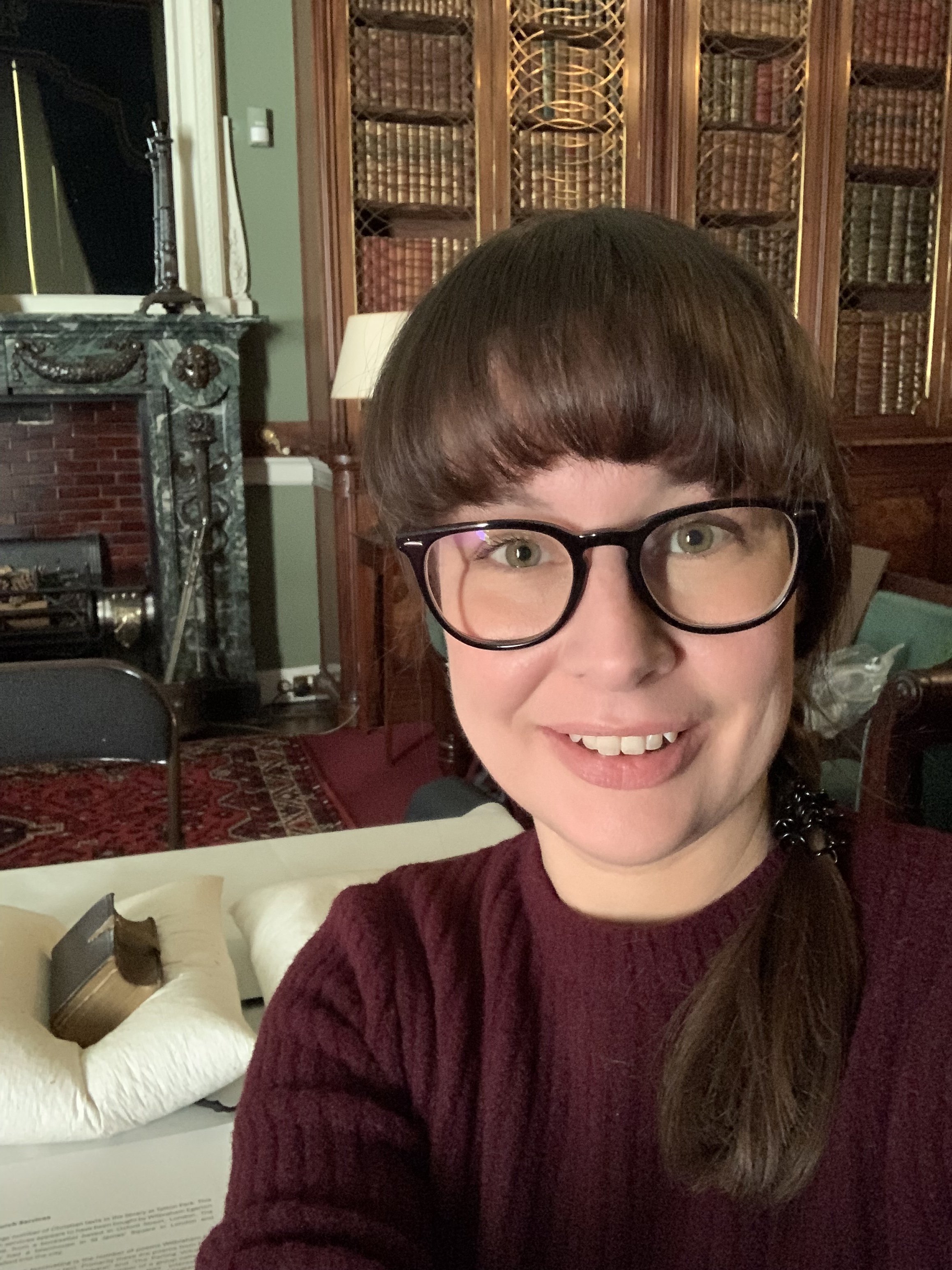Did Anyone Actually Read the Books in the Country House Library?
Rachel Daley is a Collaborative Doctoral Award researcher with Keele University, working with the National Trust at Tatton Park in Cheshire. Her PhD thesis explores the social life of the library at Tatton, examining cosmopolitan influences on collection development, the place of the library in public and private spheres, and the domestic and regional circulation of books.
Spoiler Alert - they did!
Mark Purcell, the former libraries curator at the National Trust, writes in his 2002 article ‘The Country House Library Reassessed’, that ‘for all too many people who pass through their doors, country house libraries are assumed to be dusty and neglected; their books are dull, and were selected without care, and probably never read’ (p.160). This persistent myth is strongly countered by the early nineteenth century evidence that I have been able to find in the books at Tatton Park in Cheshire, where I am currently researching the social life of the library. At the beginning of the nineteenth century, country house libraries began a transition from spaces enmeshed with masculine power dynamics to a ‘room for the entire family – including its girls and women – and a receiving room where house guests congregated for conversation and other activities’ (Brooks, 2010, p.152). There are numerous contemporary diary entries from country house owners recording afternoons spent enjoying a book and discussing its contents. In instances where such accounts of family reading no longer survive, we naturally turn to exploring the historical traces of engagement left behind in the books on library shelves. Imagine my delight then, when researching at Tatton Park to discover the annotations and marginalia of Wilbraham (1781-1856) and Elizabeth (1777-1853) Egerton across the end papers of a church services book and a book of family worship.
The book of church services appears to have been bought by Wilbraham Egerton in around 1849, from a bookseller based in Oxford Street, London. The Egerton family had a townhouse in St James’ Square in London and Wilbraham’s account books from this time show his frequent travel between his London residence and Tatton Park. What makes this book so fascinating is the number of poems Wilbraham has added to the front pages of the text – primarily works by Isaac Williams, including ‘The Modern Cathedral’ and ‘The Parting Voluntary’. Wilbraham also makes a reference to a quotation from ‘Hooker’ as it is recorded in his handwriting. From this small reference, the hunt was on across the collection to find a book that might correspond to the quotation Wilbraham had found so important he copied it into his church services book.
As soon as I opened Richard Hooker’s book On the Lawes of Ecclesiastical Politie (1617), I could see Wilbraham’s handwriting across the endpapers, from there I found his notes in the margins of numerous pages, and even collating a topic index in the back of the book. The scholarly interest that Wilbraham took in this book, the way it references other texts he was reading, and the immediacy of his notations is a compelling example of the ways in which readers were engaging with their texts. Wilbraham argues against the text in some places, noting some of Hooker’s views as ‘dangerous doctrine’ or ‘rather puerile’; on other pages he is working through his thoughts on a complex piece of the text, writing ‘this is rather obscure here, but the meaning seems to be…’, squeezing his thoughts along the edge of the page and around the corner. Part of my research is currently focusing on the social context for these notations and in understanding why Wilbraham was demonstrating such a detailed engagement with this particular text over 200 years after it was first published.
In Elizabeth’s case, the end papers of James Bean’s Family Worship have been covered with prayers in beautiful copperplate handwriting. The first prayer is particularly intriguing as it corresponds to a prayer printed in a news report from a Parisian newspaper in December 1824, found thanks to newspaper digitisation when I was researching whether Elizabeth had written these prayers herself or if they came from a specific source. The reason that this specific prayer resonated so much with Elizabeth, prompting her to transcribe it into a book she must have been using very frequently, is another thread in my continuing research. Nevertheless, the connection between this worship book and a published news report not only helps me date the period in which Elizabeth made this notation, but also highlights her engagement with the world and news media outside the country house domain.
Within the scope of my work on Tatton Park Library, I am especially keen to contribute to the programme of events aimed at animating this space for visitors. With this in mind, I was able to showcase some of the books I had found in the first year of my research during a ‘pop-up’ exhibition, focusing on highlighting the reader engagement hidden within the pages. For visitors to the library this was an opportunity to get ‘up-close’ to the books and to see examples of ordinary books made extraordinary through the traces of reader engagement left by Wilbraham and Elizabeth. From my own perspective, one of the delights of being able to speak with visitors is to share the history of these books and their connections to their readers. Being lucky enough to research these books, to open their pages and to share their history offers new ways of understanding and animating country house history, both for researchers and for visitors to country houses.
Rachel’s research can be found here, and is funded by the Northwest Consortium Doctoral Training Partnership


